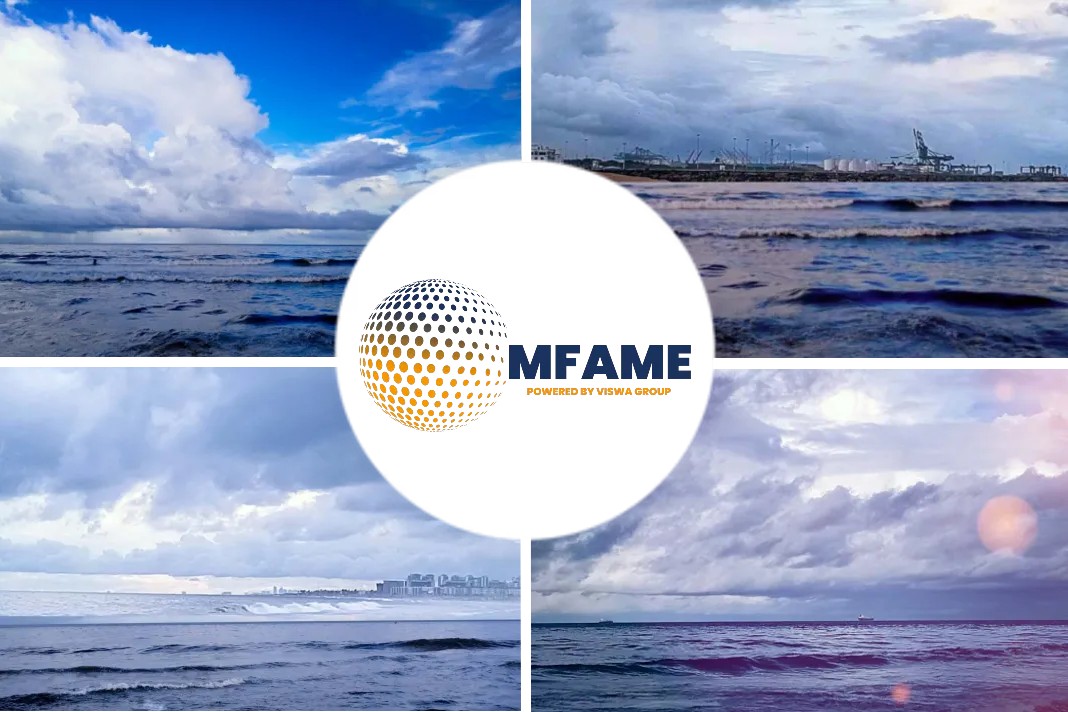American President Lines (APL), a CMA CGM-owned carrier, has announced that it achieved a 50.7% reduction in carbon dioxide emissions per transported container per kilometre in 2017, compared to its base level in 2009.
This achievement marks APL’s eighth consecutive year of improved environmental performance, as reported in the Business for Social Responsibility’s Clean Cargo Working Group (CCWG) Environmental Performance Assessment (EPA) of APL’s 2017 carbon dioxide emission data.
APL has also announced that it will reduce carbon dioxide emissions per TEU transported by 30% between 2015 and 2025, a target set by its parent group, the CMA CGM Group.
Gearing up for the global sulphur cap that comes into effect from 1 January 2020, APL will be using low-sulphur compliant fuel oil across its vessel fleet.
The carrier will also use exhaust gas cleaning systems, also known as ‘scrubbers’, on some vessels that clean emissions before they are released into the atmosphere.
CMA CGM also plan to deploy liquefied natural gas (LNG)-fuelled vessels.
As part of the CMA CGM, APL will make further inroads in environmental protection and ocean conservation as the group takes delivery of nine new 22,000 TEU LNG-powered ships from 2020 onwards.
Lloyd’s Register Group verified the CCWG EPA data:2006 standard by using the CCWG verification protocol and principles of ISO14064-3.
APL’s vessels recorded fuel savings of almost 5% in 2017 compared to a year ago, which has resulted in the carrier improving its carbon dioxide emissions per transported container per kilometre by almost 3% from the 48% in 2016.
A strategy of optimizing its fleet, vessel voyages and concentrating on fuel-efficiency has led to APL’s success.
Last year, APL saw ship bow modifications and retrofitting of propellers to vessels that aided in minimizing wave resistance and improving propulsion efficiency respectively.
With the installation of route optimization systems onboard its vessel fleet, APL’s ship officers have been able to make the most efficient navigational decisions using data captured in the systems.
APL continues to reduce sulphur oxide emission by deploying fuel-efficient vessels, using of low-sulphur fuel on its vessels and practicing of cold ironing.
Its green shipping efforts also include ocean biodiversity protection.
In 2017, 32 APL-owned vessels were fitted with IMO-compliant ballast water treatment systems.
The remaining fleet continued to deploy the intermediate solution of mid-ocean ballast water exchange to remove, render harmless, or avoid the uptake or discharge of aquatic organisms and pathogens within ballast water and sediments.
Meanwhile, it remains steadfast in protecting endangered species by prohibiting shipments such as shark fin.
Beyond its operations, APL is also searching for partnerships and has rolled-out more pro-active engagements with customers to reduce the carbon footprints of shipments.
The ocean carrier has been generating quarterly reports of carbon emissions resulting from these shipments, helping them stay aware of their carbon performance.
Dennis Yee, APL Global Head for Safety Security and Environment, said: “We are proud to raise the bar in reducing the carbon footprint of our fleet operations once again.”
“APL’s concerted efforts to improve our environmental efficiency year after year underscore our commitment to a greener and more sustainable maritime industry.”
“Responsible environmental management is a cornerstone of APL’s operations and we will persevere in our pursuit for excellence in sustainable shipping.”
Did you subscribe for our daily newsletter?
It’s Free! Click here to Subscribe!
Source: Port Technology


























